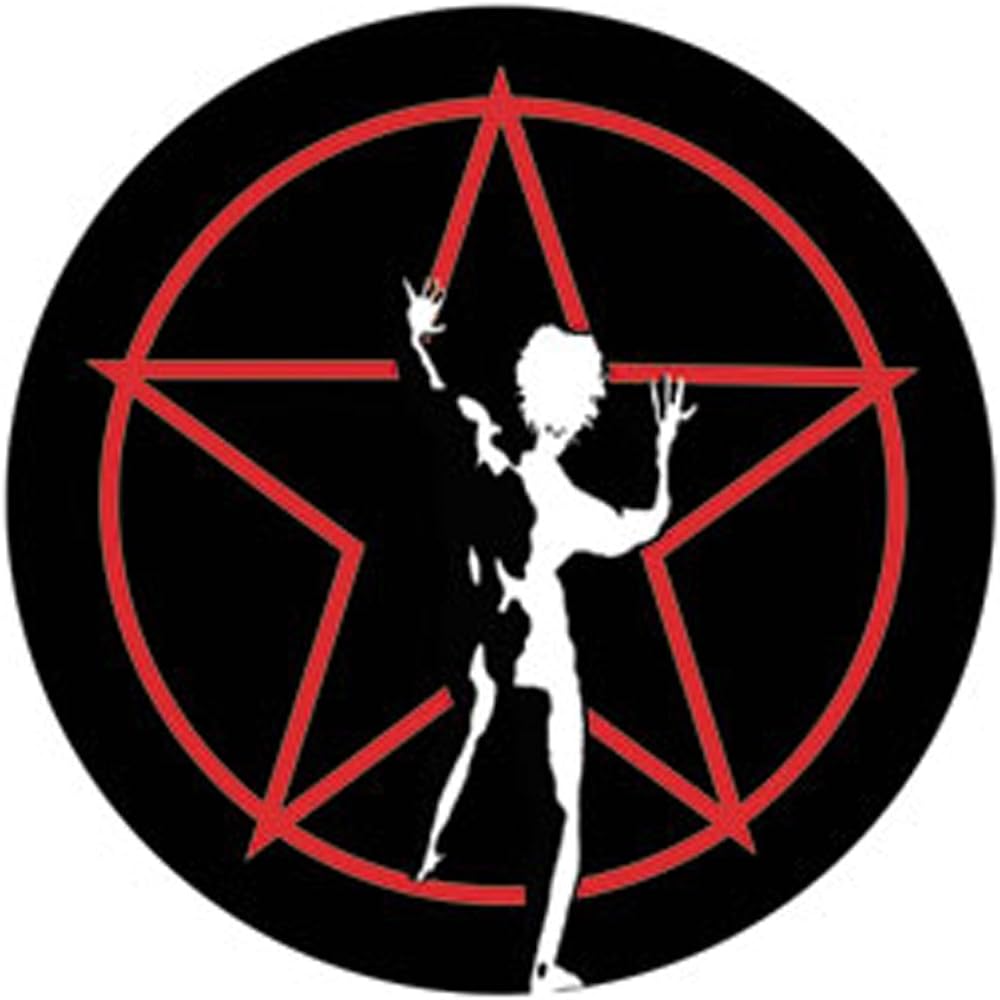I checked for others who, like me, are too European to understand the joke: 50°F is 10°C.
That’s just about perfect if you ask me.
You mean too rest of the world
Perfect for me would be more around 20°C
Ah, 10 is fine…
You mean to say that 50 °F is (approximately) 283 Kelvin, right? ;P
Shorts weather that one
Thanks bro I was about to ask
I checked too before I saw your comment, I can confirm.
The hero we needed.
deleted by creator

I work with Americans and this hits home hard. It’s especially infuriating when they format their dates. “I had a meeting with so-and-so on 4/5” and nobody has any fucking clue what they mean.
The worst part is how hopelessly oblivious they are about it. It’s not even like they don’t care that nobody does things their stupid way - it’s the fact that they’re so insulated that they can’t even fathom that nobody does things the same way they do. It just goes to show how clueless they are about the rest of the world and how little they get out of their neighborhoods.
It drives me mad. At this point, it’s just offensive how ignorant they can be sometimes. If you have to work with other people, you should at least make an effort to be aware of the fact that others do things a different way and try to avoid situations like this, but they just refuse to do so.
Apologies… /rant
I’m American and always use 30 Dec 2023 as my date scheme. It makes much more sense. I also work in a multicultural laboratory, so there should be no question as to what date it is, but some of my colleagues still use mm-dd-yy.
some of my colleagues still use mm-dd-yy.
That makes it even worse. When the date uses slashes I expect it to be American, but with dashes anything other than yyyy-mm-dd doesn’t even read as a date to me
Nah. I’m British, and today is 31/12/2023. We use slashes. American’s are just wrong.
Thanks, I appreciate it! I also try to use the name of the month instead of the number as frequently as possible. To be honest, it’s not really the order of the fields that matters - format it whichever way makes you happy! Just make sure it’s not ambiguous so other people can tell what you mean. And be aware that not everyone interprets things the same way you do
Like the American below, I generally use 30-December 2023 partly because I work with an international company but mostly because after the century rolled over and we had years that looked like months I got confused.
Had a boss that formatted all dates as YYYY-MM-DD because that makes them sort correctly in lists.
Had a boss that formatted all dates as YYYY-MM-DD because that makes them sort correctly in lists.
That’s how you know it’s the correct date format
I work in an international company too! And yet, this confusion persists :-/
I also format everything YYYY-MM-DD for my personal use too. When writing prose, usually some other format is just fine, but I really would love if everyone did year-month-day
I insist on YYYY-MM-DD because it allows me to use “MM-DD” for short and piss off the euros
The MM-DD format, as a euro, pisses me off. I use YYYY-MM-DD though. It’s the recomended format by ISO, and it allows me to name files with that format and sort by name.
sickos.jpg
Everyone should be using ISO8601 anyway. yyyy-mm-dd is superior to both and leaves 0 ambiguity to the reader no matter where they’re from.
heck even inside these borders… the concept of timezones blows their minds at work lol…
them: “yeah let’s set a meeting at 9am!”
me: eastern? pacific? central? help me… heeeelllp meee
Yes, we’ll have the meeting on 3/2/2023
And I’m like… FUCK. I’ll have to ask again.
And get answered like: “2nd of March, DUH”
I do everything like this 2023-12-24
Isn’t basing a temperature scale on the freezing and boiling points of water a bit arbitrary in and of itself?
The reason they are arbitrary numbers in Fahrenheit is because they weren’t considerations when the scale was made.
Water is everywhere.
Cooking, weather, etc. You are also water.
Except that water boils at different temperatures when exposed to different amounts of pressure.
So this works pretty universally on earth… Near the ground/ocean level (plus or minus a few hundred meters). Once you get outside of that specific condition the numbers move.
So yes, fairly arbitrary.
Let’s all switch to Kelvin.
The nice thing about celcius and kelvin is that they’re the same scale, but celcius is just shifted 273.15 units. And it’s more intuitive for humans to work with smaller numbers with bigger relative differences. But yes, kelvin would be a lot better to work with, especially considering stuff like doubling temperature (doubling energy) would actually work correctly in kelvin.
But if there’s one thing that makes a lot of sense to base temperature enough for human use, I would indeed say it’s water, because all life uses water, we are completely surrounded by it, and it’s super important to nearly everything we do too.
Sure, but the vast majority of people live in low lying areas and even then it doesn’t shift that drastically. You need to climb a mountain to see the difference when it comes to applications of daily life.
Although now that I think about it. The same criticism applies to pretty much every definition of temperature that is based on the behaviour of matter. This also applies to Kelvin. Temperature is a property of matter and every type of matter behaves differently.
deleted by creator
it can be just as strange to have to think in terms of adjusting for 273.15K for the misleading “freezing point of water” or 298.15K for STP, another arbitrary standard of measurement. Kelvin is no better than Rankine
This touches on something important, which is that Celsius is based on an arbitrary pressure. It’s based on an elevation that suits the region which defined it.
It is, but if you look at how Farenheit was conceived it’s absurdly nonsensical. 0°F is the freezing temperature or some mixture of chemicals, and 90°F is a guess at human body temperature lmao.
And the freezing/boiling points of water are arbitrary except in that they are used to actually define both scales. They provide easily measurable standards.
No, 0° was the lowest temperature recorded in the city Fahrenheit lived, and 100° was considered normal body temperature, with the quality of thermometer available at the time.
It’s quite arbitrary, but ends up mapping pretty nicely to comfortable ranges for humans.
I think it’s the freezing point of brine
Well TECHNICALLY it’s not based on the state change of water.
It’s based on the formula C = K - 273.15 where K = 1.380649×10^−23 / (6.62607015×10^−34)(9192631770) * h * Δν[Cs] / k where k is the Boltzmann constant (1.380649×10^−23 J * K^-1), h is the Planck constant, and Δν[Cs] is the hyperfine transition frequency of Caesium
So even MORE abstract and unrelatable
This makes no sense. K is not a constant. Is there a variable in there?
Temperature is a measure of entropy. It depends on the disorder in a system somehow.
Temperature isn’t a measure of entropy, but the internal energy of a system. Internal energy is the total energy sum of kinetic and thermal and gravitational energy.
You might wonder how that’s calculated, and the short answer? It isn’t. We rarely look at the actual value. This also goes for enthalpy and entropy. What matters most of the time is the difference in enthalpy/entropy/energy. If you take a look at various enthalpy numbers across textbooks and software and steam tables, you’ll see the value vary significantly depending on what they use as their 0 point. No matter where the scale starts though, the difference between two distinct points will remain the same.
I honestly am not sure what I made confusing. The definition I gave is the SI definition of Kelvin & Celsius since 2019. The formula I gave is more verbose than it has to be but it’s what you get when you expand it.
https://www.nist.gov/si-redefinition/definitions-si-base-units
From what I can tell, you’re using definition of the units? In that case K doesn’t equal that equation, but it is in units of that equation.
I’m not sure of the semantic difference. When I think “a meter is the distance travelled by light in X seconds” I think m = c/299792458 s, same with Kelvin.
If you want to be radical, use Kelvin. At least it scaled identical to C so it’s easy to comprehend.
Every scale and unit is, ultimately, arbitrary. We all do have a very good understanding of what freezing and boiling water is, though, we don’t have a good intuition of “coldest day in some random place in some random year” is. Then there’s a couple of other common points of orientation: 20C is room temperature, 37C body temperature and thus warm baths and “it’s too bloody hot outside” hover around that (you actually want wet-bulb temperature for that, but it’s still a point of orientation), another point is about 60C which is the hottest you can have a beverage and drink it without excessive slurping. Also a common temperature in cooking as that’s when a lot of stuff starts to denature, e.g. egg white is about 62-65C, the temperature you want to hit for carbonara to not get scrambled eggs.
Practically everything we deal with in everyday life (short of winter weather) is within that 0-100 range. Which is due, to, well, water being liquid in that range.
I would like to dump on America for this but as Scotland is in the UK we have some unholy abomination of in between when it comes to our measurements.
Found the Finn, everyone
deleted by creator
I’ve never been to a sauna before, but are you guys okay with boiling yourselves and then immediately freezing yourselves? Doesn’t that seem very painful? Are you guys used to being Wim Hof all the time?
The thing to remember is that air is a great insulator. Air at 100°C isn’t nearly as bad as say water or metal at the same temperature against the skin. In fact, the air that comes in contact with the comparatively cold human skin will cool down rapidly, forming a layer of cooler air around you and lessening the sensation of heat further.
SCIENCE
YEAH BITCH
100°C is a quite hot one. It could hurt your nose and ears a bit, especially if they having a steaming session.
The cold water (normally ~10°C) does not hurt at all. The first minute your brain is not able to differentiate the temperature at all. After that it gets quite quickly into: ohh I should leave!
Btw: you should try sauna at some point. Especially with the steaming it’s amazing. There are also milder ones with ~80°C, I would recommend at the start.
Hmm, I think I’d rather try that at some point.
100°C is nice. And what’s a steaming session? Throwing water onto the rocks for steam every now and then is just standard operating procedure.
Yes. It’s wonderful. It feels great physically and mentally. Wim Hoff is a bit crazy tho tbh
Good for you.
Wim Hof, the guy who shredded his intestines by giving himself an enema from a public water fountain while waiting to meet his estranged son?
Wait, he actually did that???
You don’t actually start boiling at 100C lol
Yeah I might be kinda dumb sometimes
I object. Kelvin is the superior one.
Hmm, I sure love adding 273.15 to literally every single temperature I encounter
Oh sure, so what are you, a Newton scale guy? “What is it outside? 6? Lovely. High of 12? Fuck that noise I’m staying inside at a nice comfortable 5.”
Found the Scandinavian
I’ve never heard Celsius be explained more perfect than this. Thank you.
Fahrenheit is like school grades: 60 is minimum tolerance and beyond 100 adds nothing but misery.
That’s not how school grades work were I live but I guess I now understand Fahrenheit
With school grades, when you get >100, you get bullied by your peers
Anything past 85F adds nothing but misery.
About 30C to the people who use real units
Is it bad that this association exists in my mind because of a Kids Next Door joke?
Hell yeah C’s get degrees while perfect A students tend to burn up in the world
50 is pretty nice what are you on about
I don’t touch a jacket until 40, 50 is perfect.
That’s peak hoodie and jeans weather. Literally perfect.
I’d say 50 is perfect
This guy fats
I diagnose you with “weak, non-Finnish blood.”
Put a coat on, loser
Found the Canadian
Between 50 and 63 I’m in heaven. Anything higher than that and all i want to do is go swimming, which as an adult with responsibilities, i never get to. Anything lower than that, and i have to wear more clothes and look fatter than i am.
What the fuck, aren’t most buildings kept at 72? How do you exist anywhere except in a walk in fridge?
deleted by creator
Believe it or not, i did used to work in a walk in fridge, and the shifts typically ran 16 hours, but 24 wasn’t unheard of.
I never said i got these temperatures. I just said I’m uncomfortable otherwise.
Depends entirely on where you live. Surprising what people will accept as normal when their gas/electric bill is on the line.
64-68 °F is fairly standard here. No more than 68. (18-20 °C)
I agree in Midwestern as I put on my shorts and tshirt (I’m not fat, BTW… you just sort of get used to those balmy 50° days)
As a former Midwesterner (grew up there and lived there for 26 years), I never got used to the cold so I eventually moved South.
But turns out now I get cold at anything below 70F lol.
Exactly! 👍
Not to defend Fahrenheit, it’s a nonsense scale, however: As with most subjective scales the entire scale can be split into good and not good. The top part is good and the bottom part is not good. The middle of the top part is seen as average good.
So around 75 degrees would be perfect, which is close enough for something as subjective as temperature.
This is why in things like movie or game reviews a 7/10 is seen as average. Like it’s good, in the good part, but right in the middle not anything special. A 5/10 or lower is seen as not good, not worth seeing, not worth your time etc. This works for reviews, grades, person attractiveness rating etc.
Yet, Temperature is not a nonlinear star-rating by IGN, is it?
Are you saying global warming is actually caused by the bias of IGN reviewers?
The flooding of Amsterdam was really epic, 10/10 IGN
Can you prove that?
Why not? Most people only meaningfully engage with temperature scales when checking weather forecasts. It’s all pretty subjective.
If course there’s a need for Celsius or Kelvin in scientific applications, but that’s not for the overwhelming majority of people.
but that’s not for the overwhelming majority of people.
Surely you’re aware that the overwhelming majority of people do not live in the US. Nearly everyone is fine with Celcius. Billions of people, as opposed to a few hundred million that have been socialised to using the other scale
Removed by mod
i appreciate your level headed analysis
Fahrenheit is the best human-focused temperature scale. 0 is super cold, 100 is super hot, 50 is the line between short sleeve and long sleeve weather (assuming no wind). Anything outside these bounds, it simply isn’t worth going outside. But then everyone at a latitude <|37|° will say “that’s not that hot” and everyone at a latitude >|40|° will say “that’s not that cold,” so really it’s the best Kansas-focused temperature scale
Because weather is simple, right?
“It’s snowing so climate change can’t be real!”
“the perfect scale”
Proceeds to list completely arbitrary temperatures and link them to completely subjective opinions
I can make all the same points about celsius with the added bonus of 0 and 100 being universally applicable and objectively measured
- 0 freezing
- 10 cool
- 20 room temperature
- 30 hot
- 40 very hot
Yeah I guess I agree, 0 to 40 makes much more sense in the context of temperatures humans typically exist in than 0 to 100
Look, you’re entitled to your opinion but I think it’s a bit Kansocentric.
“It’s the best scale if you happen to live in the perfect conditions for it”
That last sentence was a largely facetious, poking fun at people who live in areas where it can get colder than 0° in winter or hotter than 100° in summer, who have a habit of telling other people that the extremes aren’t that extreme. In reality the fahrenheit scale is pretty useful the world around, barring deserts
I’m sure it’s useful, but it’s not really any better is what I mean
Most useful, or as some would say, best
It’s neither though. It’s not any more useful than Celsius, I’m sorry to say
Every time someone brings this up, another decade gets added until the US switches to Metric
You mean another eagle and five hamburgers.
Weather/room temp wise we probably never will. I’d rather think of my environment in terms of 0 to 100 than in terms of -18 to 38. For science and engineering, Celsius is ideal, and I can convert between the two in the very rare occasion I need to because I’m not an idiot who can’t do basic math.
That’s entirely a matter of habit. There is nothing special about 0°F (random point in the cold range?) or 100°F points (random point in the hot range?), you’ve been lied to.
We don’t think -18°C to 38°C, we think -50°C to +50°C (regular Celsius weather thermometer, covers almost any temperature observed on Earth), with 0°C differentiating between snow/ice, “wintery” weather, and rain/mud, “non-wintery” one. That’s how we know whether to take umbrella (no point if it snows, hat is your best friend), what kind of shoes are the best fit - cold-resistant or highly waterproof - or which kind of jacket is gonna fit the situation. Melting point of water is actually incredibly important weather-wise and entirely ignored by Fahrenheit scale.
When it’s not winter, normal range is 0-40°C, with 20°C designating comfort temperature.
For science and engineering, Celsius is ideal,
The SI base unit for temperature is Kelvin with 0 K being the coldest possible temperature. 273.15 K is the melting point of ice. But it’s a lot better suited for temperature differences. Celsius is only a derived unit.
And well, all units and measurement systems had a lot of changes over time because some things turned out to be impractical or inaccurate.
Initially Celsius had 100° as the freezing point of water, 0° as the boiling point of water. Fahrenheit had 0° as the coldest temperature he could produce and the (wrong) average human body temperature at 90°. Kelvin was initially defined via Celsius, that got reversed, they have the same scale. There is also Rankine, which starts at 0 like Kelvin, but uses the Fahrenheit scale.
And the US partially uses SI units anyways, all units are derived from them to use their superior base unit definitions. This system came into existence to have unit definitions that are better reproducible and change less over time. Since everything was redefined and all numbers changed anyways, they also tried to make use of the “new” decimal representation of numbers. And new unit names were nice to create some general units, in contrast to foot and pound, which were always different from place to place, at times even from city to city.
I don’t expect the US to ever switch. The US switched to international yard and pound instead of switching to a decimal system. After US, UK, Canada, Australia, New Zealand and South Africa agreed on that one, all countries who remained using these units had a uniform definition for them. Since then you don’t need to know any longer which yard or pound it was. Though not all units got standardized by that.
And some countries didn’t drop all old units and metricized some instead. Even SI kept the ton(ne). You can’t know what 1t exactly means without knowing the context, it can be 2240lb, 2000lb or 1000kg (~2204.6226lb).
Aviation is already backwards; aviators give distance to travel in nautical miles, visibility in statute miles, altitude and runway length in feet, speed in knots, weight in pounds, volume in gallons, and temperature in celsius. My favorite is the standard adiabatic lapse rate is given as 2°C/1000 feet.
Celcius us a horrible scale for science or engineering. The world literally explodes when water freezes.
Oh shit I better pull that ice out of my freezer then, I about blew up the world
There are many people (particularly in northern regions) who would consider 50° to be quite mild/pleasant
New Englander born and raised. Thats hoodie and shorts weather. Best time of the year.
Minnesota checking in. This is exactly correct. Great time for sitting around a fire.
this meme also works in Celsius.
0°C is not very cold… chilly maybe.
deleted by creator
Yes it is, but that’s not very cold.
It is actually, literally freezing, then again temperature feeling is a bit relative. Anything under 20 is chilly to me.
steals your clothes and now?
I put on my robe and wizard hat.
Removed by mod
I steal them back 🤷.
It can be much more freezing than that.
People have no idea what -25°C feels like…
I was on holiday at Disneyland Paris at 14 in December or January one year and it was -14/15 °C and it was the coldest place I’ve been and it definitely felt like it. I’m from Ireland for reference so winters are pretty mild here.
It was -28°C the night I was born, 1st of February. People around here don’t remember a winter as cold as that one.
Maybe that’s why I like the cold, IDK.
deleted by creator
That is true. Would like to experience that one day, I was thinking of moving to Alaska or Canada in the not so distant future, somewhere very cold.
-40°C and -40°F is where I take the kiddos outside with a cup of boiling water and let them make snow.
lol 🤣
Depending on where you live, going below freezing, even down towards 0F (-18C), is common. I’d say things don’t go into “too cold to go out” territory until the single digits for me.
Tbh all I care about with wether temp is wether it’s possible to snow or not. So on that front Celsius is quite intuitive and useful.
1 or 2 to about 5°C is snowing temperature. Yes, I agree, quite intuitive.
I like the snow. I like cold, in general. I hate summers, I’m always too hot and sweaty.
45 is very hot, 0 is very cold, 22.5 is ok
Ok is -273.15 C.
Nice.
22.5 is about the point where it starts being too warm
In a few years, with global warming on the rise, we may be saying that 50C isn’t that hot.
FML
Very hot in Celsius is like… in the 30s. At 100C you’d be dead.
We see 50C in Australia from time to time now thanks to global warming.
If you score 100 on a test then that’s a perfect, therefore 100 is the perfect temperature.
And if you score 51 you pass, so 51 is the passing temperature.
💯
50 is indeed perfect.
And you get the throphy my man 👍👍👍.
Don’t impose your imperialistic temperature views on the rest of us! Leave us cold lovers alone!
deleted by creator
50 degrees Fahrenheit
Unless you are literally a demon
deleted by creator
Dont kink shame
Indoor temp? No. Outdoor temp? Yes!






























